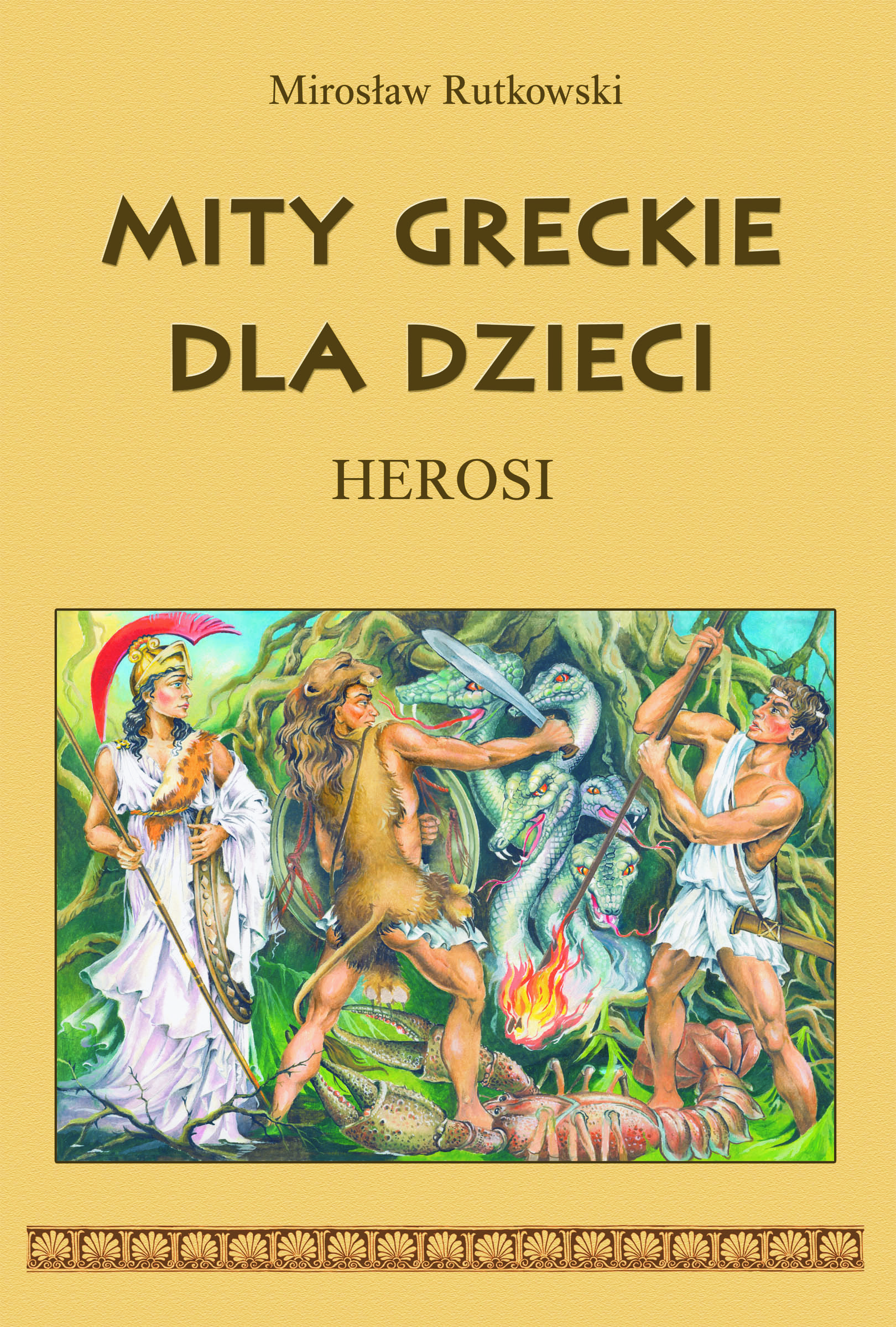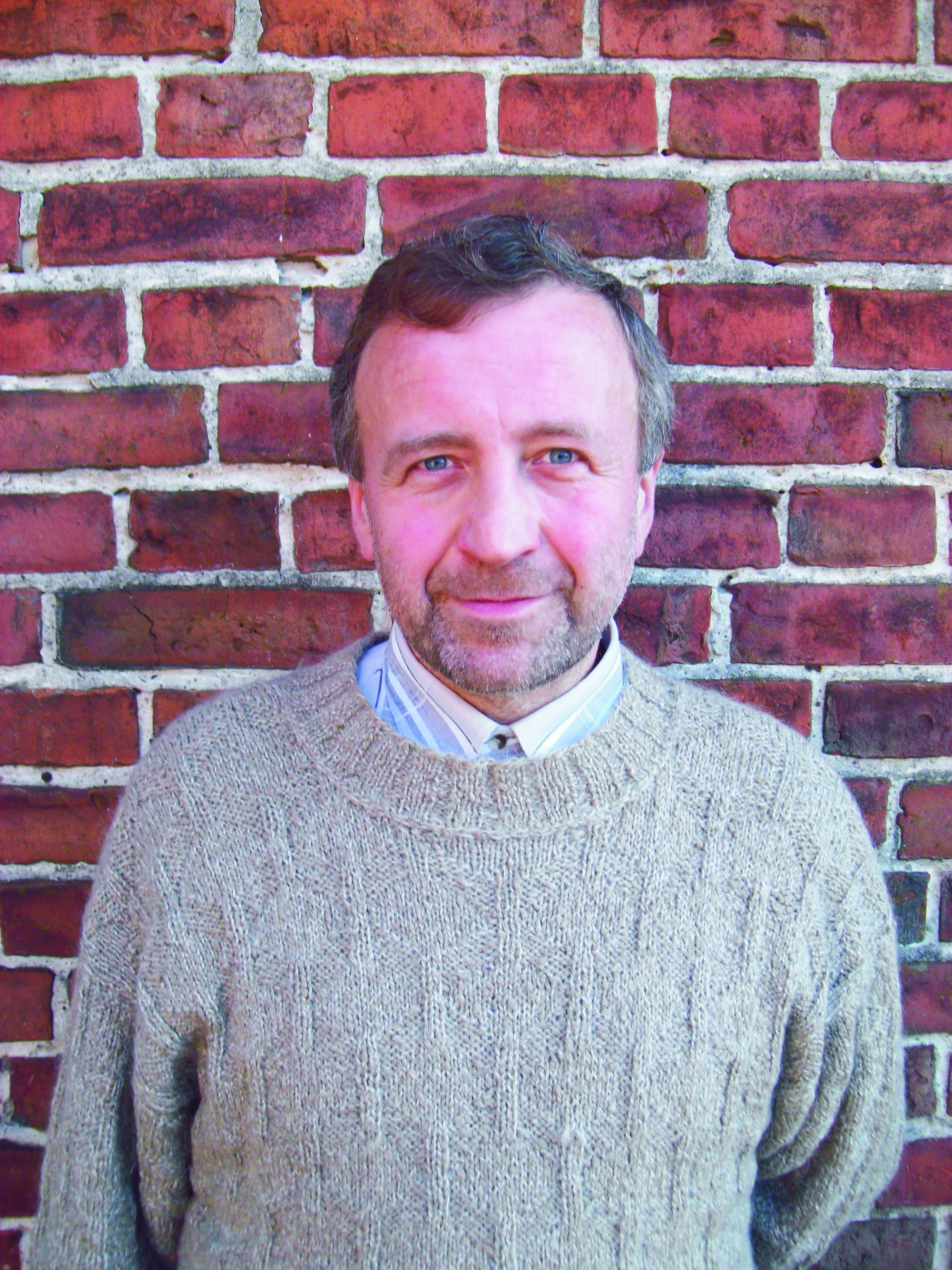Title of the work
Country of the First Edition
Country/countries of popularity
Original Language
First Edition Date
First Edition Details
Mirosław Rutkowski, Mity greckie dla dzieci. Herosi. Kraków: Wydawnictwo Skrzat, 2006, 84 pp.
ISBN
Genre
Mythologies
Target Audience
Children
Cover

Courtesy of the publisher.
Author of the Entry:
Summary: Anna Górska, University of Warsaw, anna.gorska@gmail.com
Analysis: Marta Pszczolińska, University of Warsaw, m.pszczolinska@al.uw.edu.pl
Peer-reviewer of the Entry:
Katarzyna Marciniak, University of Warsaw, kamar@al.uw.edu.pl
Elżbieta Olechowska, University of Warsaw, elzbieta.olechowska@gmail.com
Courtesy of the Author.
Mirosław Rutkowski
, b. 1963
(Author)
Born in Cracow. English and Latin teacher at the I General Education High School in Stargard Szczeciński (north-western Poland) from 1990 to 2003. Authored two books for children on the topic of Greek mythology published by Wydawnictwo Skrzat in Cracow: Mity greckie dla dzieci. Bogowie [Greek Myths for Children. Gods], 2003, and Mity greckie dla dzieci. Herosi [Greek Myths for Children. Heroes], 2006. In 2012 Friends of Stargard Society published his book entitled Stargard nie tylko dla dzieci [Stargard Not Only for Children] describing the past and the present of the city. He lives now in Piasecznik by Choszczno, where he works on his farm.
Source:
Based on the material kindly provided by the Author.
Bio prepared by Anna Górska, University of Warsaw, anna.gorskaa@gmail.com
The Editors would like to express their thanks to Anna Lewicka, Director of Maria Dąbrowska Municipal Public Library in Choszczno, for the contact with the Author.
Sequels, Prequels and Spin-offs
Mirosław Rutkowski, Mity greckie dla dzieci. Bogowie, Kraków: Wydawnictwo Skrzat, 2003.
Summary
Based on: Katarzyna Marciniak, Elżbieta Olechowska, Joanna Kłos, Michał Kucharski (eds.), Polish Literature for Children & Young Adults Inspired by Classical Antiquity: A Catalogue, Faculty of "Artes Liberales", Warsaw: University of Warsaw, 2013, 444 pp., section by Anna Górska, pp. 326–331.
Second part of a series. Four myths about the greatest Greek heroes: Theseus, Hercules, Perseus, and Jason. Written for school children in the form of short stories. Theseus, son of Aegeus and Aithra: he was brought up at the court of his grandfather. One day he proved his unusual strength by lifting a huge boulder. It was for him a turning point. Hercules, son of Zeus and Alcmene: nobody knew his real origin but he couldn't hide his great strength; it was obvious that he was not just an ordinary man. Perseus, son of Zeus and Danaë: nobody could hide him from the world because his destiny was to be a great hero. And finally Jason, son of Aeson king of Iolcos, captain of the Argonauts, reared by the centaur Chiron who had other famous pupils, such as Peleus, Achilles, and Asclepius.
The author tried to show classical stories in a plausible way, without dissimulating cruel details, even those related to the Twelve Labours of Hercules. These myths are adapted for children but their contents are not far from the adult versions. Colourful illustrations and maps render the book very attractive, they may also serve as an introduction to ancient geography. Each map is decorated with striking, easy to remember drawings.
Analysis
The author selects four of the greatest heroes of Greek antiquity as protagonists to present myths connected with them. The book can be considered an introduction to mythology as a first reading on the subject or teaching aid for school. To add to the book's value as a didactic tool, the author's informative preface explains heroic cycles in Greek literature. The young reader learns that heroes were seen as gifts from gods to humanity to clear the world of dangerous beasts or rogues with divine assistance. Also, the connection of myth cycles to the places of worship of the heroes is highlighted: Heracles – Peloponnesus, Theseus – Athens, Jason – Thessaly. The author mentions that the myths came from different ancient literary sources: Apollonius, Plutarch, Pausanias and Ovid. Although the versions of the myths often differ, it does not make them any less valuable, and all of them are regarded as authentic. Last but not least, the heroes' adventures can be used as moral guidelines, especially that the heroes are strongly present as models of behaviour throughout centuries-old European tradition.
The heroes are presented chronologically; thus, the myth of Perseus, the oldest of them, is placed at the beginning. Rutkowski describes the story of Perseus in detail. The text is clearly adapted to children, as it uses appropriate language. The child is easily attracted by an interesting and gripping story, full of dialogues, descriptions and stylistic devices, making the tale fascinating. For instance, Acrisius orders the forging of a massive door for his daughter’s prison cell, selecting oak as the building material and strengthening it with a bronze sheet. In contrast, the fragile and delicate Danaë enters her cell, trembling, wearing a crown of marjoram flowers and ivy on her head. Acrisius personally locks the door and hides the key. The opposition between the adjectives used to describe that scene allows the reader to instantly sympathize with the poor girl. As for the story's development, the author highlights the issue of gods' help, as he promised in his preface. Athena trains young Perseus and the Graeae, gives him wise advice and offers magical objects he will need to fulfill his mission. Death presented in the myth seems to be fair – wrongdoers (Medusa, Fineus, Polydectes and Acrisius) meet with their just retribution.
The myth of Heracles comes next, which is chronologically correct, as his mortal grandfather Alcides/Alkaios was Perseus' son. The double lineage of the hero – of Amphitryon's and Zeus' – is explained as a sign of Zeus' divine wisdom because he wants Heracles to be a powerful defender for the gods and the people. The myth is told with many less known subplots and raises some difficult issues, especially violence. The author does not gloss over the manslaughter of Linus, Iphitus, the cruel mutilation of Orchomenos' messengers ("some tell, that he cut off their ears and noses, beaded them on a cord and hung on their necks. Such a tribute he ordered to bring to their king", p. 28), fights with villains or madness which cost the lives of Heracles' wife, Megara and his children. The latter case is shown along with the tragic hero's remorse and despair and the support given by a friend, Theseus. The Delphic oracle suggested changing his name and remaining in the service of Eurystheus for 12 years; the message that every crime has to be punished but can be redeemed through tough tasks corresponding to the gravity of the misdeed. The purpose of the punishment is obvious to the reader – not only to purify the murderer but also to cause an internal change – Heracles is told to return from queen Omphale when he can become a better and more tender future husband and father to his future children.
The third chapter describes the myth of Theseus, who is younger than Heracles. The hero is a son of Poseidon, though he considers himself the son of Aegeus. Before his heroic story begins, his abandonment by Aegeus is presented as a necessity – Aegeus leaves Aethra to protect the baby from his brother's envy. The lonely journey to Athens, during which young Theseus cleans the high roads from dangerous villains, proves his value as a would-be hero, but again also shows that spilling of blood, even if justified, requires a cleansing ritual. Curiously, there is no need for purification after the killing of the Minotaur. Theseus is presented in the myth as a slayer of villains and a kidnapper of Antiope and Helen, but also, as a proven and loyal friend of Pirithous, and a wise ruler looking after the administration, economy and social issues of the Athenian state.
The last myth tells the story of Jason, the leader of the Argonauts, combined with the circumstances preceding the quest (the story of Phrixus and Helle, Jason's life before arriving in Iolcus). Although Jason is not the son of a god, having being raised by Cheiron, he enjoyed considerable support from the goddess Hera; he gathered famous heroes of his time under his command and lead them to achieve the impossible. As for the course of the mythical venture, the journey to Colchis and back is described in detail. The assistance of Medea is highlighted, although her character cannot be viewed as unambiguously positive. She does not kill her sons – the Corinthians stone them, but she undoubtedly murders Apsyrtus, her younger brother, during their flight from Colchis. Somewhat contrary to the treatment of drastic scenes in the rest of the book, the murder of Apsyrtus is described in disturbing detail: a deliberate stabbing of specific body parts with a dagger and the cold-blooded quartering of the corpse. Shockingly, after committing the murder, Medea shows no emotion and returns to ordinary activities, such as the washing of bloodstained peplum, as if nothing happened.
The four myths are all provided with full-page maps showing the locations connected to the heroes' stories.
Further Reading
Mirosław Rutkowski, Mitologia, Kraków: Wydawnictwo Skrzat, 2010.
Addenda
The Editors of the catalogue would like to express their thanks to Anna Lewicka, Director of Maria Dąbrowska Municipal Public Library in Choszczno, for the contact with the Author.



